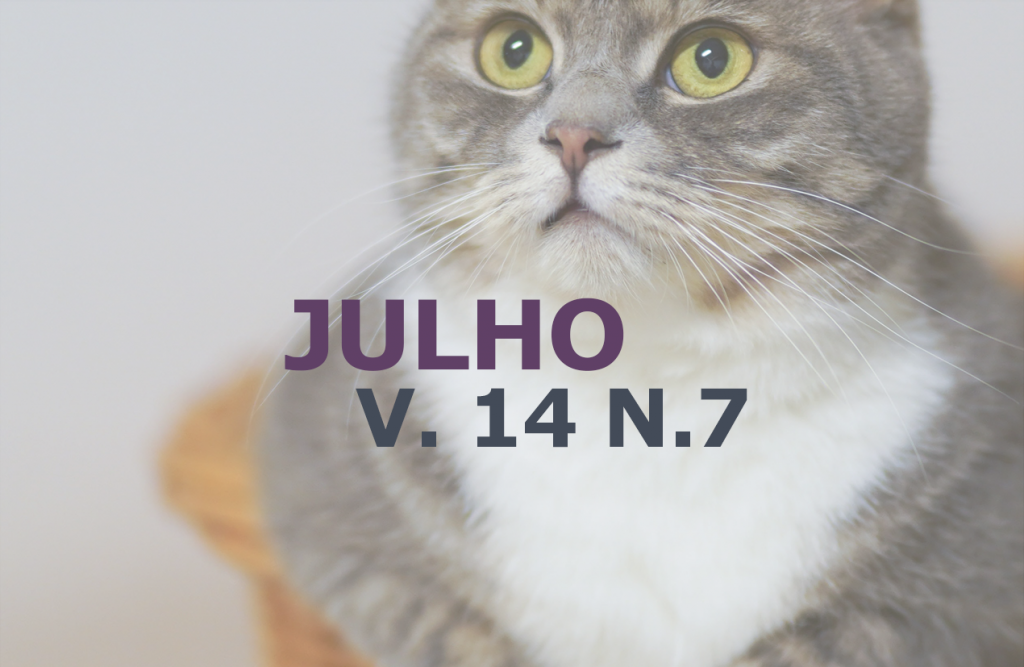Casuistry of mycoses in small animals attended at the University Veterinary Hospital of Ceará: restrospective study
DOI:
https://doi.org/10.31533/pubvet.v14n7a614.1-9Keywords:
cats, dogs, epidemiology, yeastAbstract
The increased use of immunosuppressive therapies and the emergence of retroviral infections, both in humans and animals, have been decisive for the expansion of opportunistic, largely fungal diseases. In view of this reality, since 2013 the Laboratório de Microbiologia Veterinária (LAMICRO) of the Faculty of Veterinary of the State University of Ceará (UECE) develops research and extension activities providing mycological diagnosis for samples from small animals attended at the Veterinary Hospital Unit and later at the Veterinary Hospital Sylvio Barbosa Cardoso. Thus, the objective was to document the casuistry and the diagnoses made by LAMICRO in a period of 5 years, emphasizing the importance of the mycological diagnosis and contributing to the establishment of the epidemiological profile in the region. For this, a retrospective evaluation of the records containing the data of the animals, the clinical signs, the main suspicion and the other exams requested was performed. Between July 2013 and December 2018, 2.431 samples were received, among these 543 were positive for some type of mycosis of veterinary importance. The cases of mycosis, diagnosed in the period of 5 years, affected predominantly canines between 2 and 10 years of age and cats up to 2 years of age; they were more frequent in dogs and cats without a defined breed, manifested in both species, by allopecic, diffuse and crusted lesions; topographically, lesions were observed in both species in the cephalic, thoracic, limb, cervical and abdominal regions; they had as more common etiological agents, in both species, Malassezia pachydermatis and Microsporum canis. Knowledge of the epidemiology of mycoses in pets, especially dermatophytes, is important to reduce the spread of infection by zoofilic fungi to humans and help to obtain prophylactic measures in the spread of the disease among animals. The direct examination, used in the present study, is an important form of diagnosis and can help the clinician reducing the time necessary for the beginning of the treatment, however it is still little sensitive, this way it makes if necessary the use of the fungal culture to obtain better results; both, associated to the animal clinic, provide a more precise diagnosis so that the established therapy is effective for a better treatment and prognosis of the clinical cases.
Downloads
Published
Issue
Section
License
Copyright (c) 2020 Rosane de Oliveira Cruz, Adriana de Queiroz Pinheiro, Barbara Wilka Leal Silva, Géssica dos Santos Araújo, Lorena Mayana Beserra de Oliveira

This work is licensed under a Creative Commons Attribution 4.0 International License.
Você tem o direito de:
Compartilhar — copiar e redistribuir o material em qualquer suporte ou formato
Adaptar — remixar, transformar, e criar a partir do material para qualquer fim, mesmo que comercial.
O licenciante não pode revogar estes direitos desde que você respeite os termos da licença. De acordo com os termos seguintes:
Atribuição
— Você deve dar o crédito apropriado, prover um link para a licença e indicar se mudanças foram feitas. Você deve fazê-lo em qualquer circunstância razoável, mas de nenhuma maneira que sugira que o licenciante apoia você ou o seu uso. Sem restrições adicionais
— Você não pode aplicar termos jurídicos ou medidas de caráter tecnológico que restrinjam legalmente outros de fazerem algo que a licença permita.





